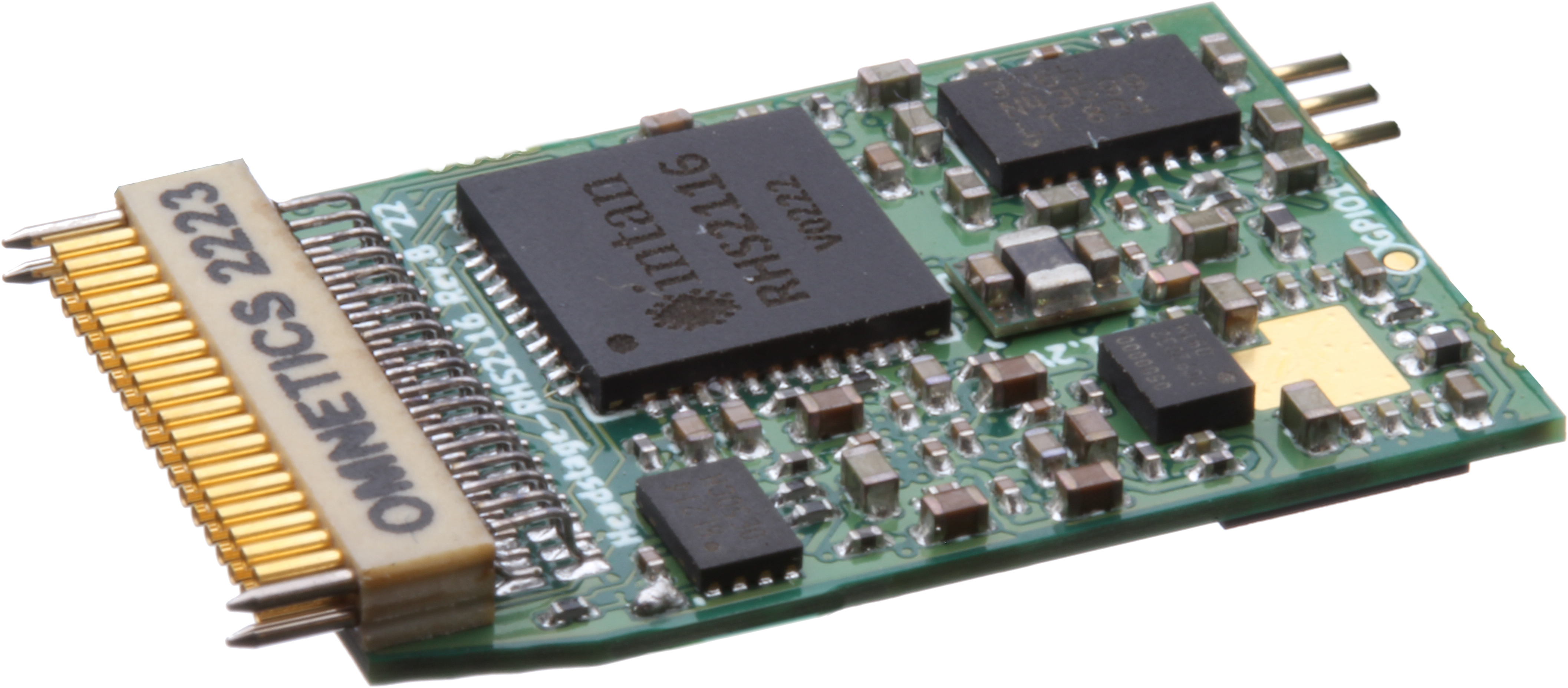RHS2116 Headstage#

The RHS2116 Headstage is a serialized headstage for small animals with 32 bi-direcional channels which each can be used to deliver electrical stimuli. The RHS2116 Headstage can be used with passive probes (e.g. silicon arrays, EEG/ECOG arrays, etc) using a 36-Channel Omnetics EIB.
Features#
Two RHS2116 ICs for a combined 32 bi-directional ephys channels
~1 millisecond active stimuls artifact recovery
Max stimulator current: 2.55mA @ +/-7V compliance.
Sample rate: 30193.2367 Hz
Stimulus active and stimulus trigger pins
On-board Lattice Crosslink™ FPGA for real-time data arbitration
Data Link Serialization#
For details on data serialization and headstage gateware, have a look at the Coaxial Data Serialization & Power page, which describes how coax headstages operate in general terms. The RHS2116 headstage has the following coaxial link properties:
Parameter |
Value |
Min |
Max |
Unit/ Type |
|---|---|---|---|---|
FPGA |
LIF-MD6000-6UMG64I |
|||
Serializer |
TI DS90UB933 |
Coaxial |
||
Supply Voltage |
4.0 |
3.4 |
5.0* |
Volts |
Hub Clock Frequency |
50 |
MHz |
Warning
*Do not exceed 5.0 VDC at the coaxial input to the headstage. Make sure you make this measurement at the headstage (see Measuring Headstage Voltage) to account for a potential voltage drop in the tether.
Note
Have a look at the Making Coaxial Tethers page for more details on micro-coax headstage tethers
Electrophysiology#
RHS2116 headstage uses two 16-channel Intan RHS2116 bioamplifier chip. The chip is operated at a fixed sampling rate of ~30 kHz/channel. These 32 ephys channels are exposed via a 36 pin Omnetics connector at the edge of the headstage and can record from most passive probes (e.g. tetrodes, silicon probe arrays, tungsten microwires, steel EEG wires, etc.) as well as stimulate.
Bill of Materials#
Interactive BoM (a csv BoM can be downloaded from this page)
Note
Have a look at the Headstage Voltages page for more details on probing and verifying headstage power voltages